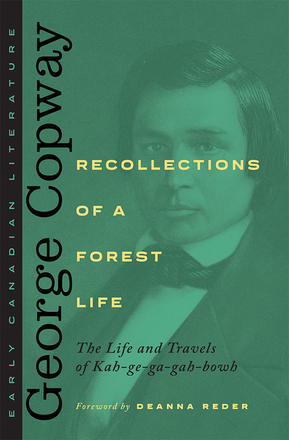
First book written by an Indigenous author in Canada
Description
The first book published by an Indigenous author in Canada is George Copway’s Life, History, and Travels of Kah-ge-ga-gah-bowh (1847), in which he offers an autobiographical account of his life and experiences, details the changing landscape of his homeland, recounts Ojibwe customs, traditions, and history, and critiques settler society’s exploitation of Indigenous people and territory. Copway’s autobiography was incredibly successful: it went through seven editions within a year of its publication and was expanded and republished in 1850 under the title Recollections of a Forest Life.
This edition features an afterword by Deanna Reder and will compare the differences between early versions of this classic, as a way to think through discussions that are still pertinent today including: the editing history of Indigenous texts; culturally appropriate reading strategies; the influence of Indigenous epistemologies, and in this case Anishnaabe-specific worldviews; and the ways in which autobiography was and continues to be a preferred Indigenous intellectual tradition.
Also included in this volume is information about George Copway as a member of the Nineteenth Century Ojibway literary coterie, in the context of his ancestors, his peers, and the work of Anishinaabe writers today.